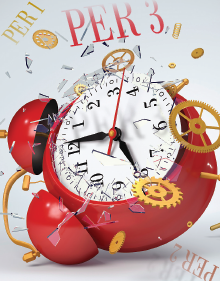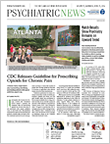Researchers have long recognized that sleep and mood go hand in hand; patients with depression often experience too much or too little sleep, and sleep deprivation can alter mood. Yet, the molecular basis of this connection has remained unknown.
A research team at the University of California, San Francisco (UCSF), recently identified a gene that they believe could provide a link between sleep and mood regulation. The researchers found a mutation in a critical circadian gene called PERIOD3 (PER3) when analyzing the genomes of several members of an extended family with high rates of seasonal affective disorder (SAD) and familial advanced sleep phase disorder (FASP)—a condition in which people have an accelerated biological clock (that is, slightly less than 24 hours).
“People with this disorder would naturally drift in time, going to bed and waking up a little earlier each day,” explained study coauthor Louis Ptáček, M.D., a professor of neurology at the UCSF School of Medicince. “Obviously, the constraints of human society do not allow for that, and that leads to poor sleep behaviors.” In turn, noted Ptáček, the lack of quality sleep can lead to many physical and mental problems.
To understand how PER3 affects circadian rhythm and mood, the researchers engineered a strain of mice with the PER3 mutation. When exposed to a normal light-dark cycle (12 hours of light, 12 hours of darkness), the mice with the PER3 mutation behaved similarly to mice without the mutation. However, when the mice were exposed to light for only four hours and darkness for 20 hours, the mice started showing delays in their regular routines of activity and rest compared with control animals under the same conditions.
The PER3 mutant mice also showed more depression-like symptoms than mice without the mutation during the periods of extended darkness, as observed in the tail suspension test (the mice with the PER3 mutation spent more time immobile). Treating the animals with the antidepressant imipramine led to a decrease in the depressive-like symptoms.
Ying-Hui Fu, Ph.D., a neurology professor at UCSF and coauthor of the study, told Psychiatric News that the role of the period gene family in circadian disorders has been studied for a while, but few paid much attention to PER3.
“Evolutionarily, PER3 is just a little different from PER1 and PER2, which are the key components of the 24-hour clock. When PER3 is knocked out in mice, the circadian disruptions are not as strong as with those other two genes, so it has been somewhat ignored,” she said.
“But this discovery suggests that while PER3 may not be as critical on the sleep side, it might be a nexus connecting sleep and mood,” she continued.
Their findings were published February 22 in the Proceedings of the National Academy of Sciences.
While the PER3 mutation has been identified in only one family to date, Ptáček believes that this work holds broader significance; he pointed out that genomewide studies looking for depression risk factors among the general population have repeatedly identified genetic polymorphisms, or variants, near the PER3 region.
“No one has been able to prove that these variants specifically affected PER3, but with our new data, the findings from these genomewide studies suddenly become more believable,” he said.
This work was supported by multiple grants from the National Institutes of Health. ■
An abstract of “A PERIOD3 Variant Causes a Circadian Phenotype and Is Associated With a Seasonal Mood Trait” can be accessed
here.

